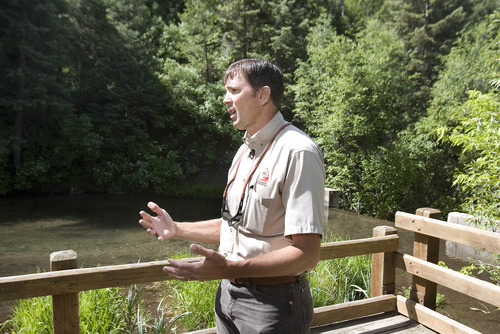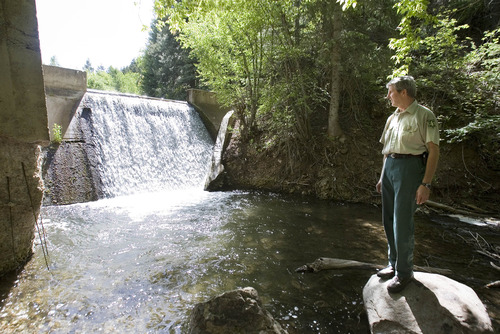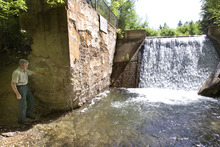This is an archived article that was published on sltrib.com in 2013, and information in the article may be outdated. It is provided only for personal research purposes and may not be reprinted.
Lake Bonneville may have disappeared thousands of years ago, but the cutthroat trout that roamed the massive and ancient lake can still be found in various Utah waters, albeit in much lower numbers.
A new effort to bolster the native fish is scheduled to start this fall when the Utah Division of Wildlife Resources (DWR), U.S. Forest Service and a number of nonprofit and corporate partners begin a project on Mill Creek in Mill Creek Canyon.
"Our role of being a partner to the Bonneville Cutthroat Trout Conservation Team is to provide long-term persistence for this species," said Paul Cowley, fish and wildlife program manager for the Uinta-Wasatch-Cache National Forest. "We are excited to be a part of this effort."
State fisheries biologists, aided by volunteers from Trout Unlimited and the Utah Anglers Coalition, will remove all fish from the upper stretches of Mill Creek this fall using rotenone, a naturally occurring poison that prevents fish from absorbing oxygen into their blood through their gills.
The nine miles of Mill Creek in Mill Creek Canyon will be treated in phases to allow fishing for "catchable" trout (10-12 inches) during the entire process which officials expect to wrap up with a final restocking of the lower portion of the creek in 2016. When the project is completed, Bonneville cutthroat trout, Utah's state fish, will be the only trout in the system. Other native species like sculpin and mountain sucker may also be reintroduced into the creek after treatment.
Removing all fish from the creek is necessary because other trout in the system — brown and rainbow — are not native and affect the native cutthroat in numerous ways, including out-competing them for food and interbreeding with the Bonnevilles, tainting their species purity. Fish barriers will keep the non-native species from returning upstream and allow the cutthroat to expand and, hopefully, thrive.
Rotenone is approved by the Environmental Protection Agency and will be neutralized at the end of each treatment area. An informative Web page on the project and rotenone use can be found on the DWR's website at bit.ly/millcreekfish.
While part of the DWR's mission is to provide diverse and ample angling opportunities, Utah has focused much of its effort in the fisheries area on restoring native cutthroat — Bonneville, Colorado River and Yellowstone — across the state. Helping to keep the species from making the federal Endangered Species List is also part of the goal.
"It is encouraging to be able to say we are putting back native Bonneville cutthroat trout in a stream where they historically evolved," said Mike Slater, the DWR's central region aquatics director. "Bonneville cutthroat have been petitioned to be listed multiple times and it has been found to not be warranted. Projects like this one in Mill Creek help us keep it from happening."
Cowley said the Forest Service will start its part of the project this summer by pulling out a bridge, replacing culverts and doing habitat restoration work all along the creek.
Twitter: @BrettPrettyman —
Fish restoration project meeting
O An open house is set for June 27 from 6:30 to 8:30 p.m. at Skyline High School, 3251 E. 3760 South. Officials from the Utah Division of Wildlife Resources and U.S. Forest Service will be on hand to talk with people interested in the project.







